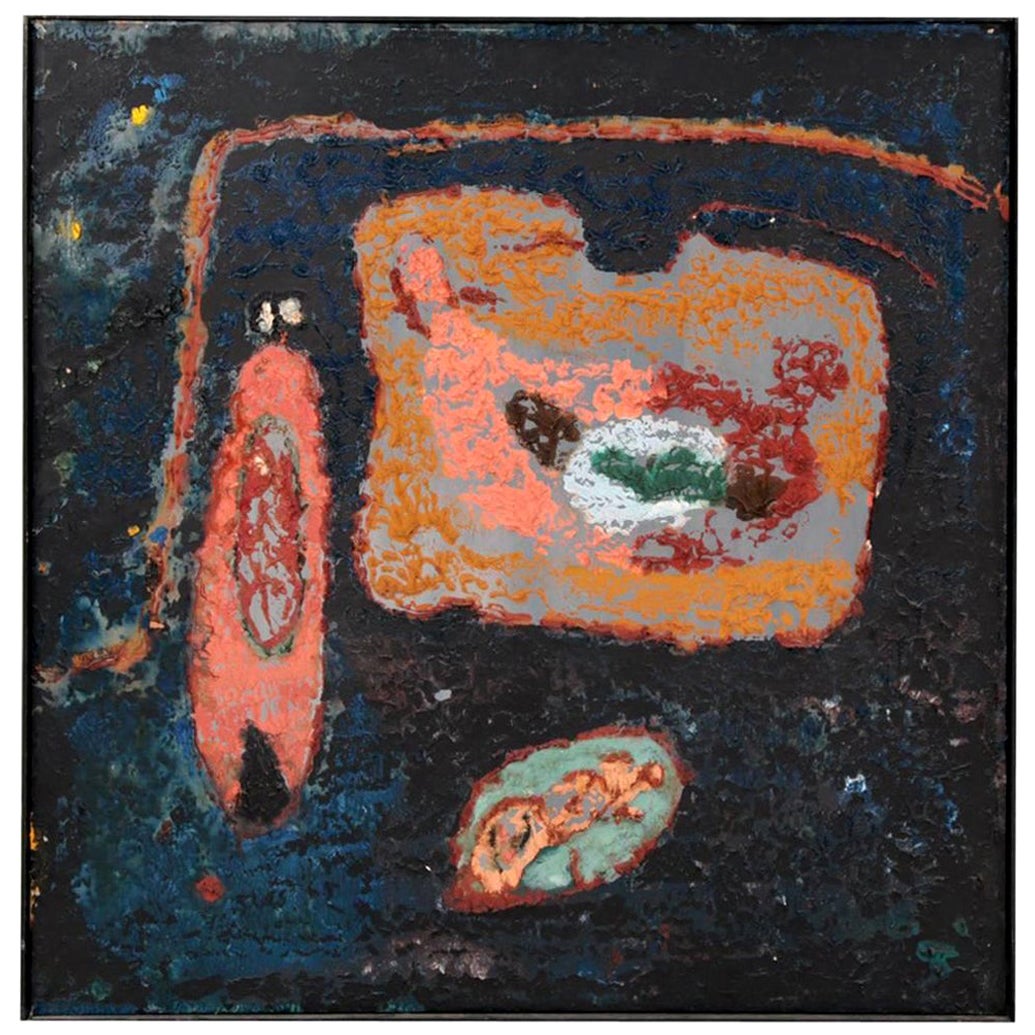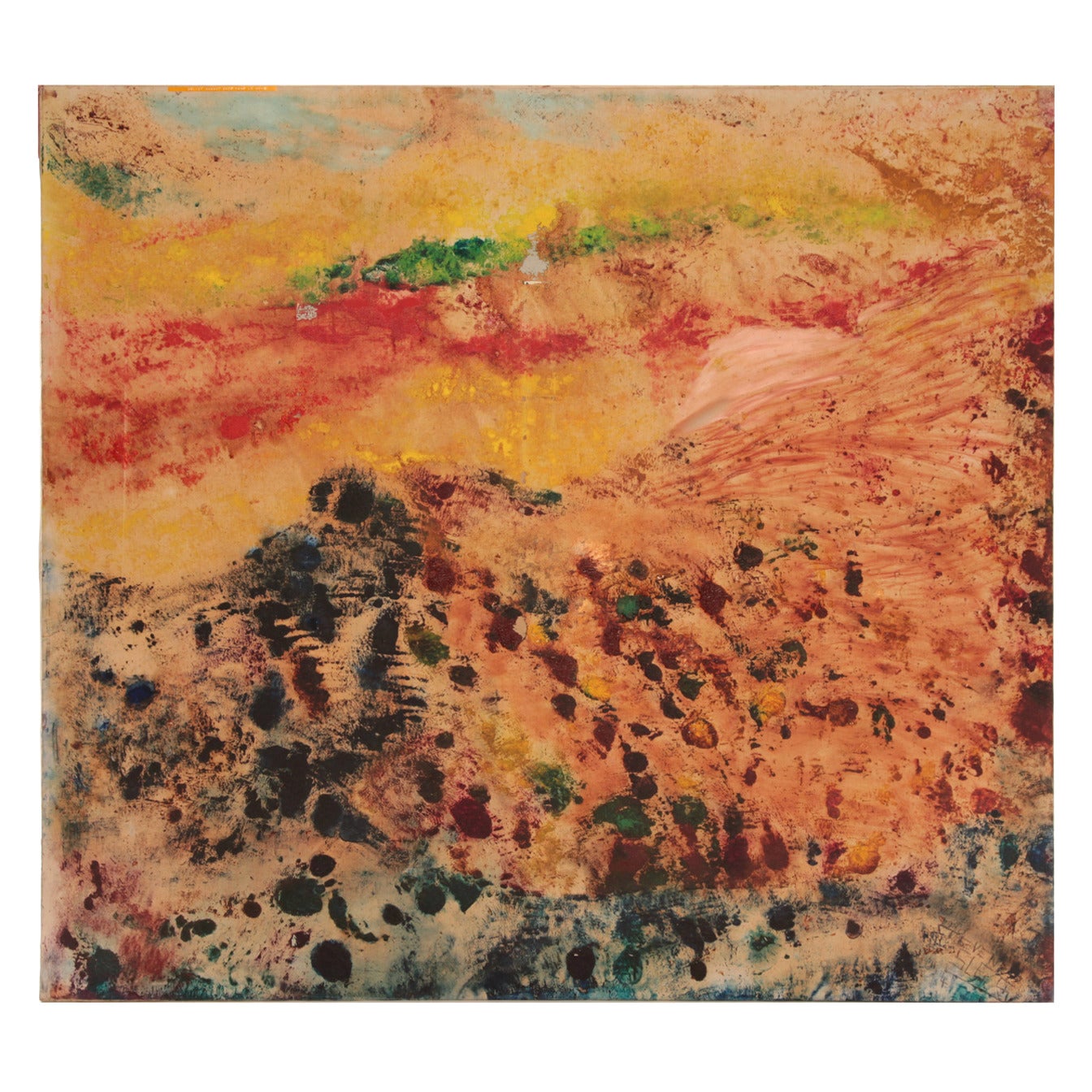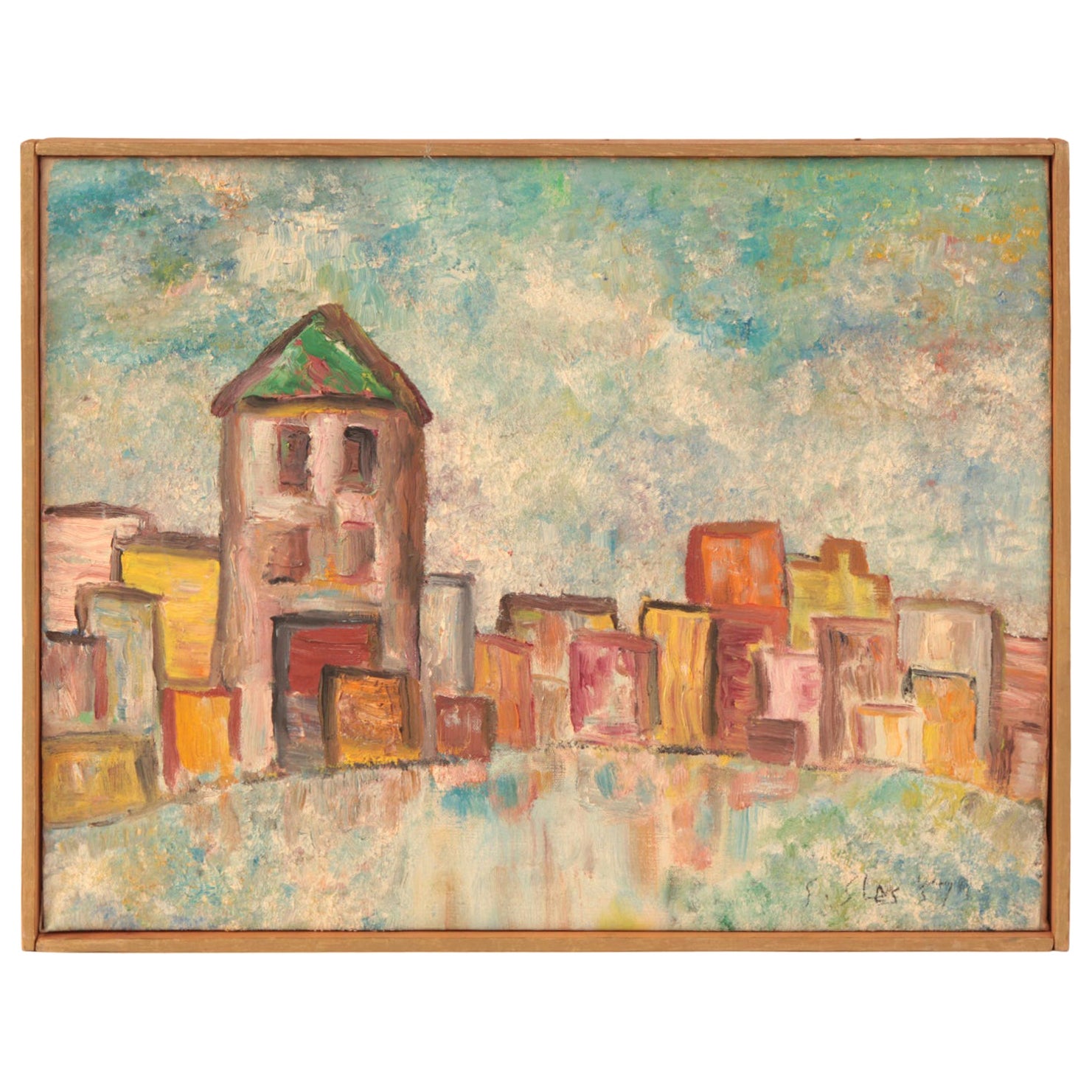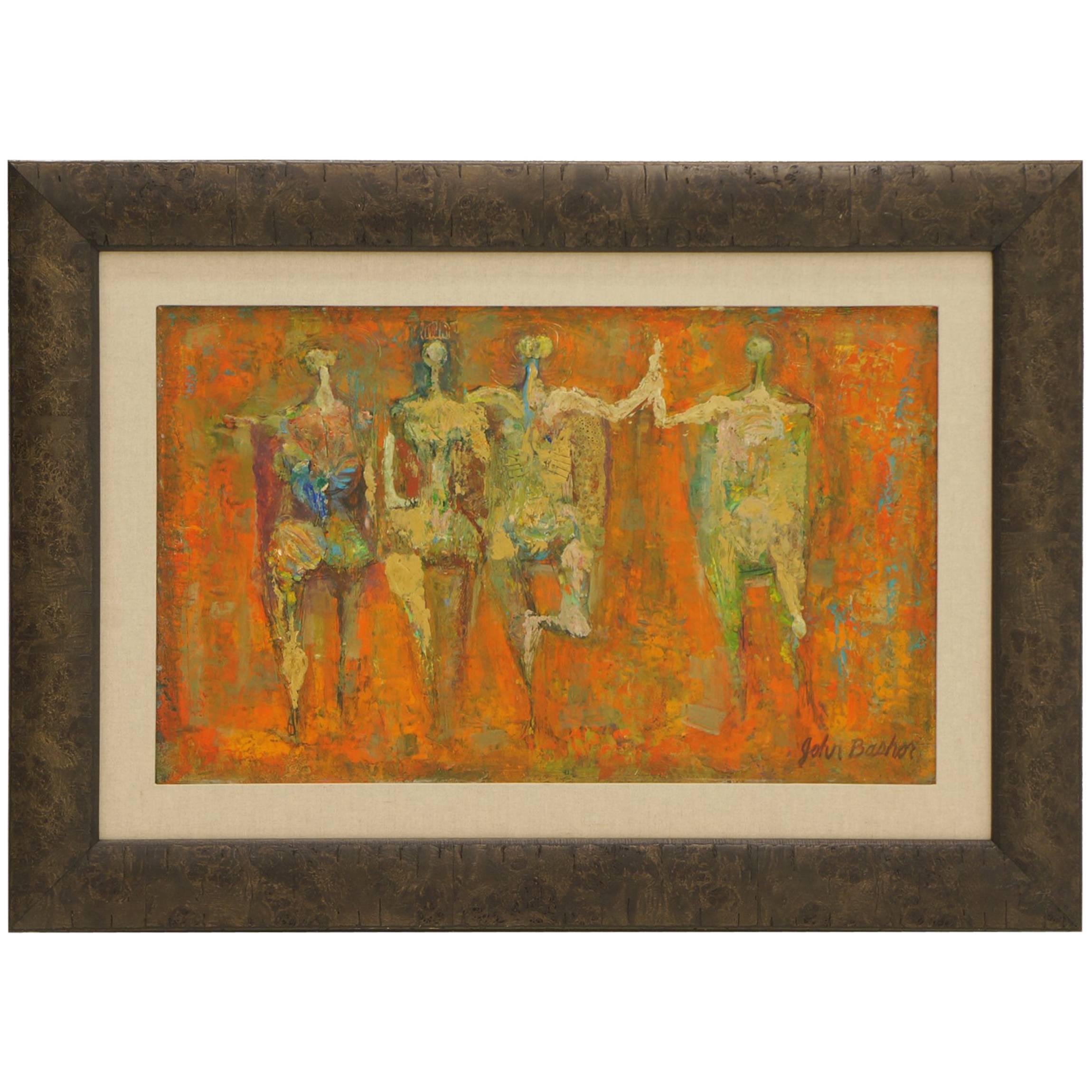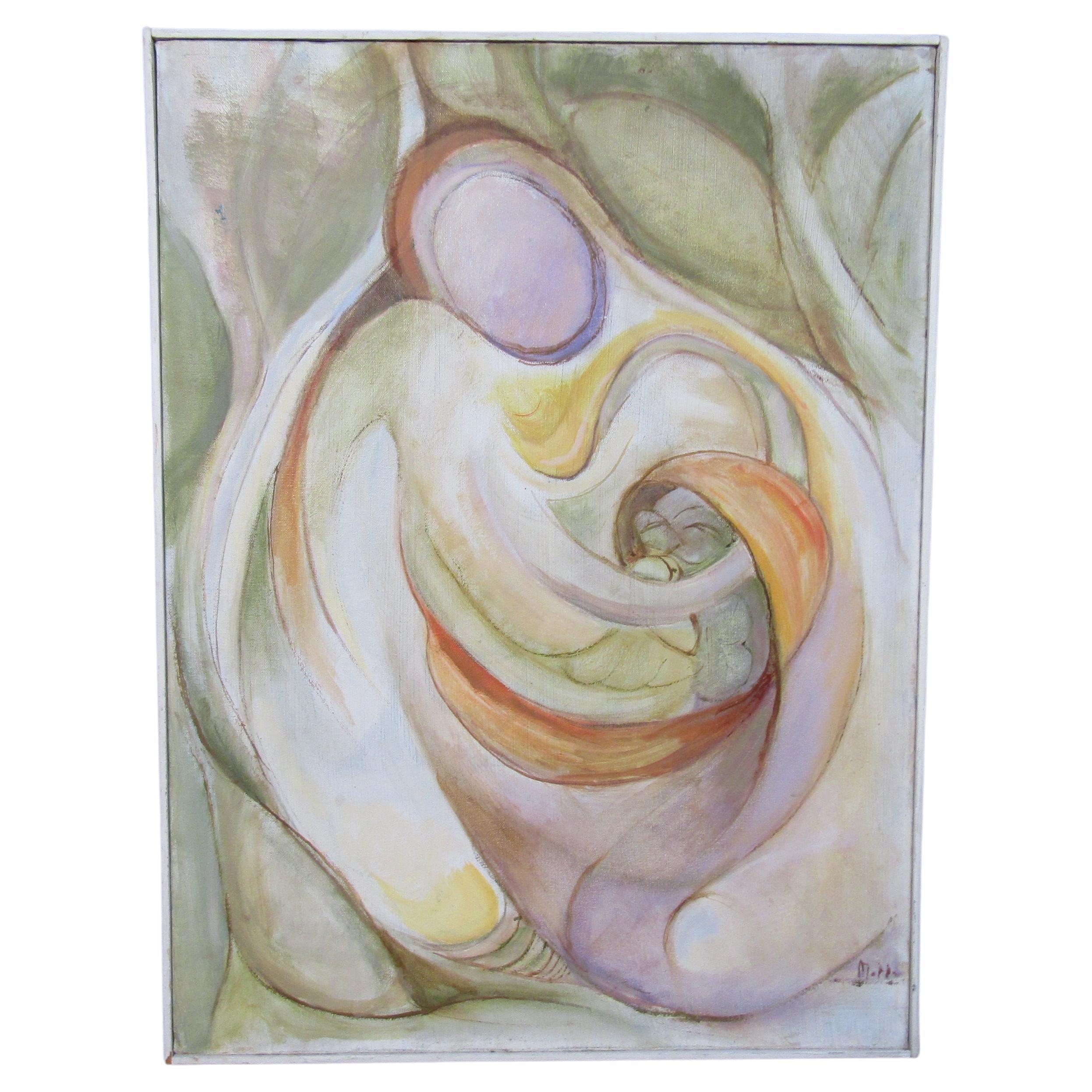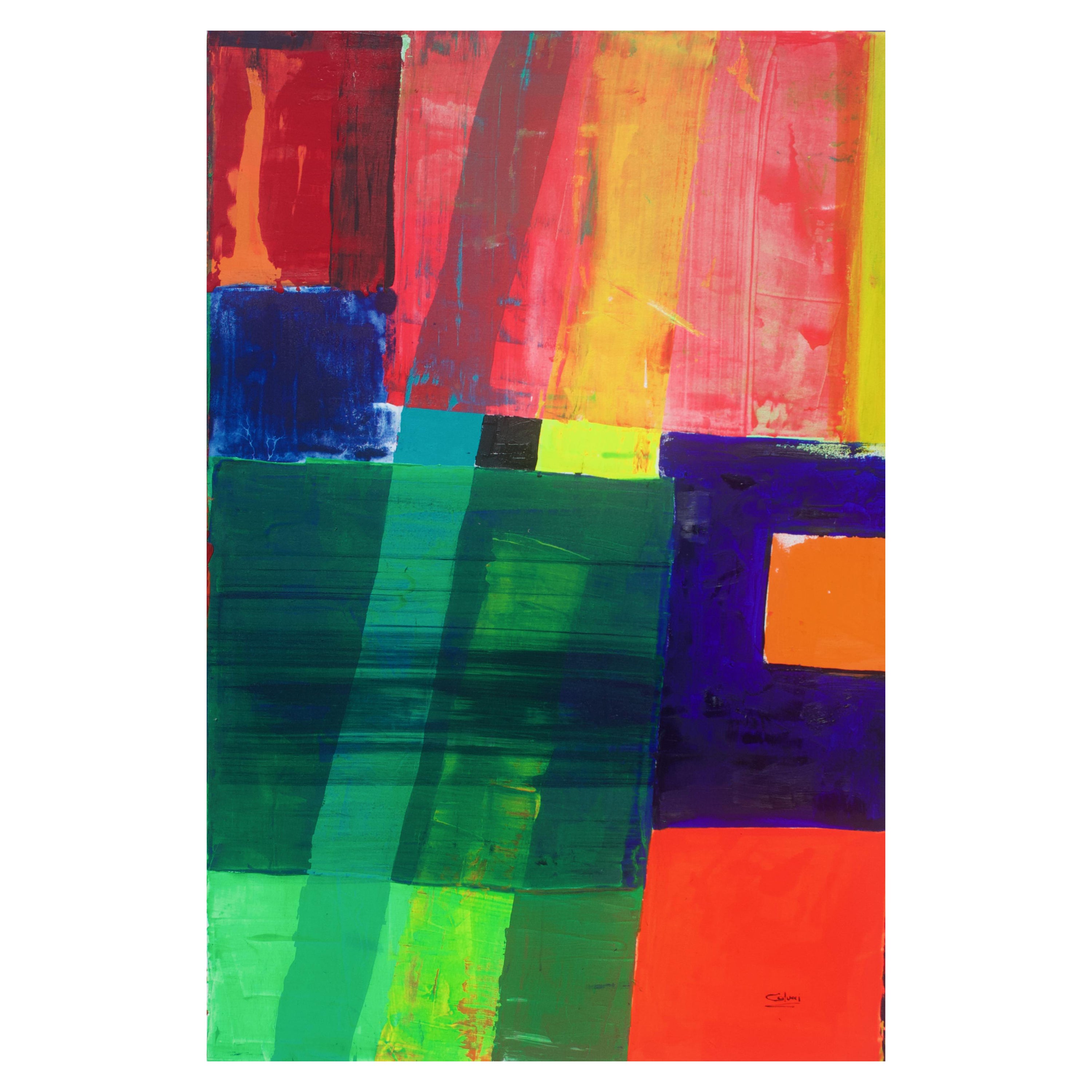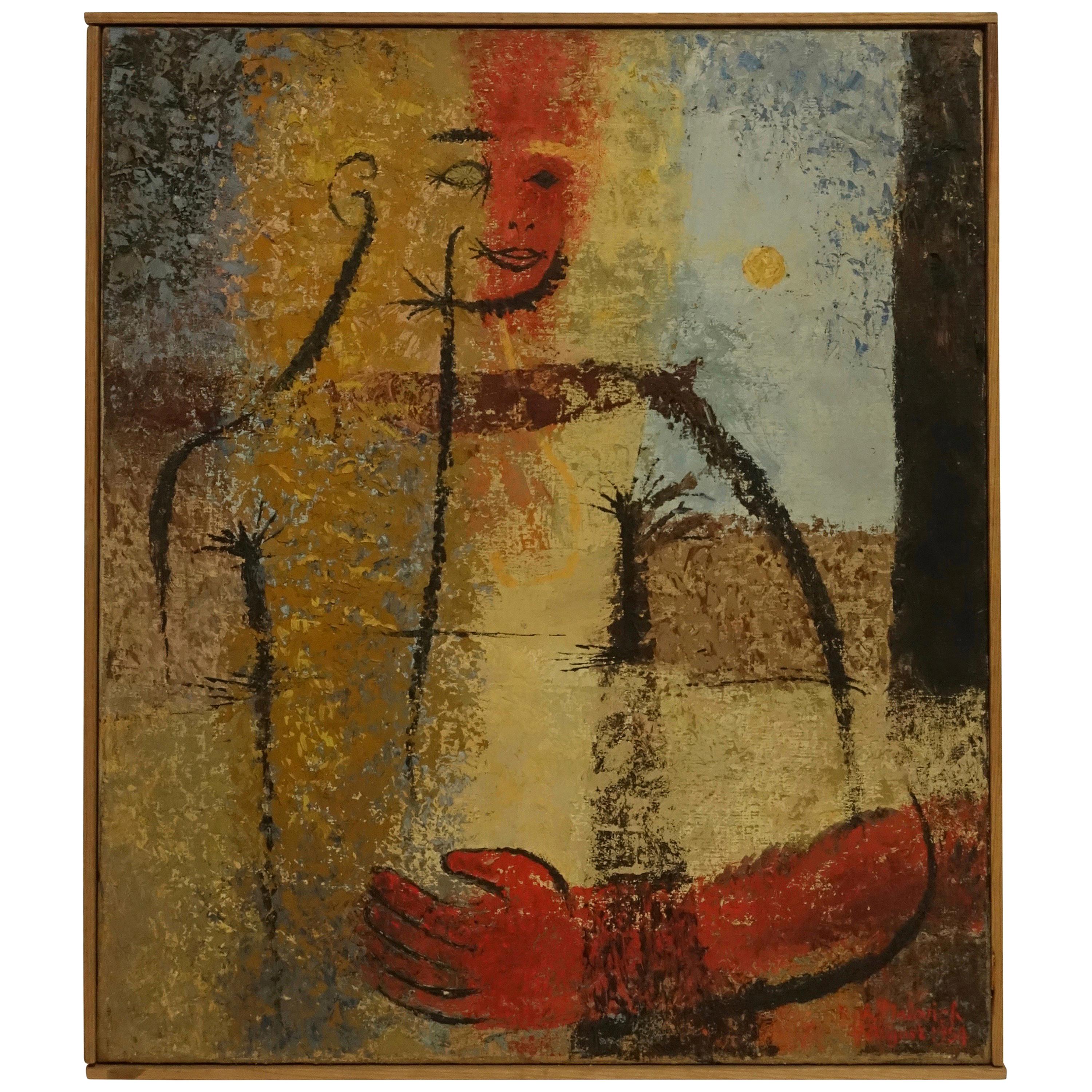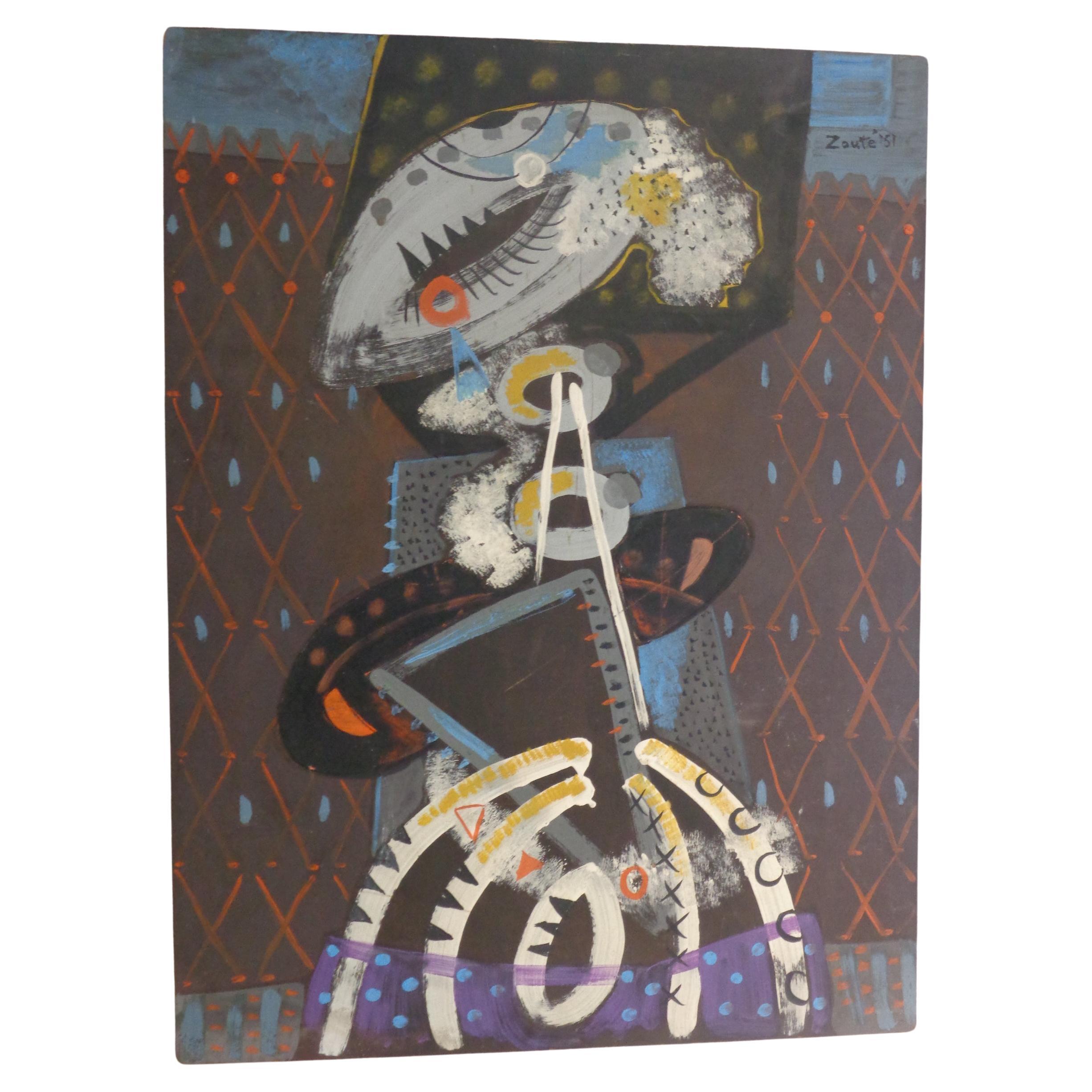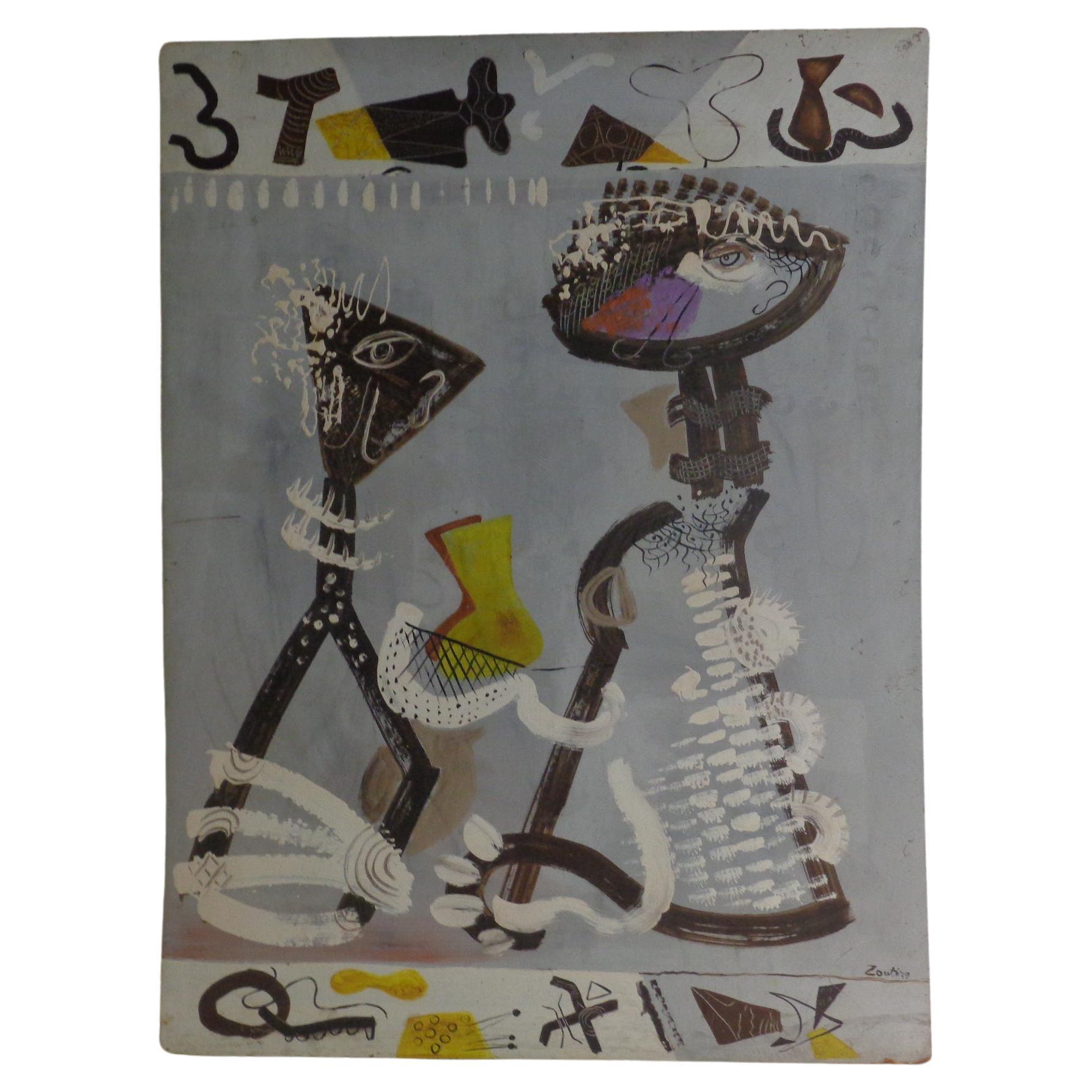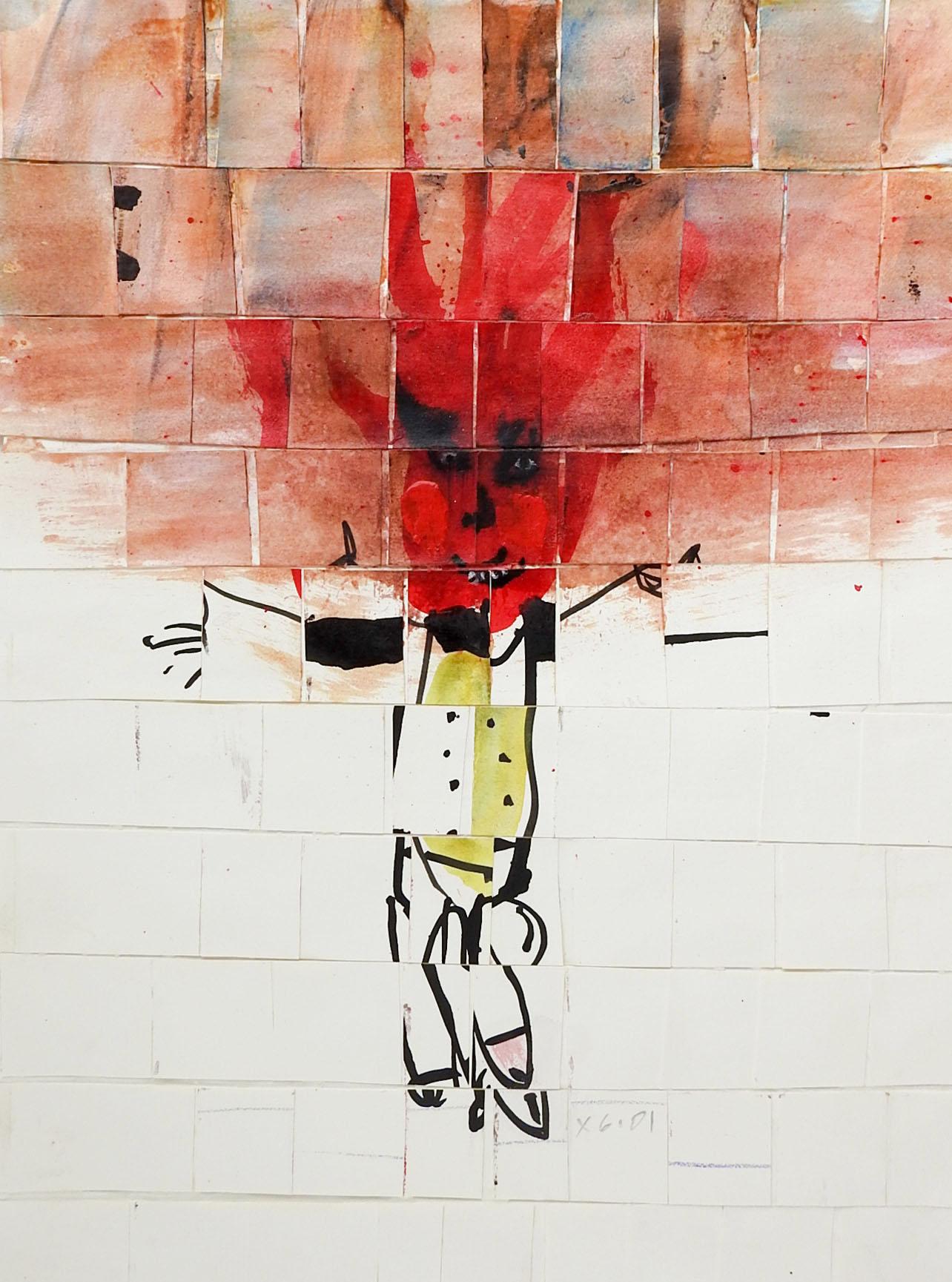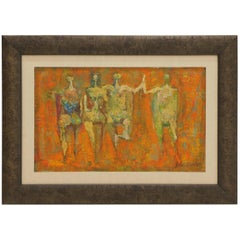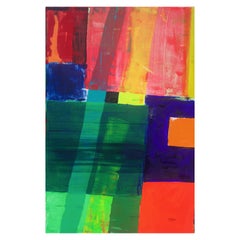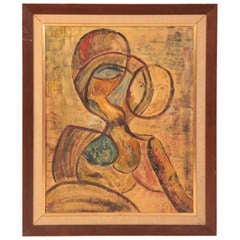
Abstract Figural Painting by Steven Sles
View Similar Items
Want more images or videos?
Request additional images or videos from the seller
1 of 5
Abstract Figural Painting by Steven Sles
About the Item
- Creator:Steven Sles (Artist)
- Dimensions:Height: 27.5 in (69.85 cm)Width: 21.75 in (55.25 cm)
- Style:Mid-Century Modern (Of the Period)
- Materials and Techniques:
- Place of Origin:
- Period:
- Date of Manufacture:Mid 1960's
- Condition:Wear consistent with age and use.
- Seller Location:Phoenix, AZ
- Reference Number:1stDibs: LU8532792981
About the Seller
5.0
Gold Seller
These expertly vetted sellers are highly rated and consistently exceed customer expectations.
Established in 1993
1stDibs seller since 2008
410 sales on 1stDibs
Typical response time: 1 hour
Associations
20th Century Specialists
More From This SellerView All
- Steven Sles 1960's Textured Abstract Oil PaintingBy Steven SlesLocated in Phoenix, AZTextured oil on linen painting by Steven Sles, circa early 1960s. Sles was handicapped and used his mouth to paint. He studied under Hans Hoffman. This ex...Category
Vintage 1960s American Mid-Century Modern Paintings
MaterialsPaint
- Abstract Steven Sles Midcentury Oil Painting on LinenBy Steven SlesLocated in Phoenix, AZEarly Steven Sles oil on linen painting circa 1964. Sles was a mouth painter with very limited use of his hands. He was also a student of Hans Hoffman. This example has a wonderful l...Category
Vintage 1960s American Mid-Century Modern Paintings
MaterialsLinen
- Oil Painting Ocean Scene on Linen by Steven SlesBy Steven SlesLocated in Phoenix, AZEarly Steven Sles oil on linen painting circa 1955. Due to his Cerebral Palsy, Sles used his mouth to paint his works and studied under Hans Hoffman. This work mixes thick texture an...Category
Vintage 1950s American Mid-Century Modern Paintings
MaterialsLinen
- Steven Sles City Landscape Oil on Linen Painting, 1957By Steven SlesLocated in Phoenix, AZEarly oil on linen landscape painting depicting a city by Steven Sles circa 1957. This example has a thick textured background and foreground with architectural and natural forms in ...Category
Vintage 1950s American Mid-Century Modern Paintings
MaterialsLinen
- Acrylic Abstract Painting by Jim Proctor, 1960sLocated in Phoenix, AZLarge scale acrylic on board painting by Jim Proctor, circa late 1960s. This example has vibrant hues of oranges yellows and blacks and has compositional depth and great flow. This w...Category
Vintage 1960s American Mid-Century Modern Paintings
MaterialsAcrylic
- Red 1960's Abstract Tree Painting by Shiro IkegawaLocated in Phoenix, AZShiro Ikegawa (1933-2009) studied art and oil painting in Japan at the Tokyo University of Arts and later moved to Los Angeles in 1956 where he attended ...Category
Vintage 1960s American Mid-Century Modern Paintings
MaterialsPaint
You May Also Like
- Abstract Figural Painting by John Bashor, 1950sLocated in Kansas City, MOPainting by John Bashor (1926-2003)- Artist from Montana, professor at Bethany College in Lindsborg, KS. This work was done in the 1950's. Excellent comp...Category
Vintage 1950s American Mid-Century Modern Paintings
- Abstract Swirling Figure PaintingLocated in Brooklyn, NYThis vintage painting depicts an abstracted figure in swirling colors. The painting is framed and signed by the artist. Please confirm item location with seller (NY/NJ).Category
Mid-20th Century Expressionist Paintings
MaterialsCanvas, Paint
$455 Sale Price30% Off - Mixed Media Painting by Steven ColucciBy John ByardLocated in New York City, NYSteven Colucci’s iconoclastic approach to performance and the visual arts have not only long blurred the boundaries between these disciplines, but have challenged its most basic assumptions. The title of this show references a most rudimentary dance move --the plié --and our assumptions of what to expect in relation to this. Also the suggestion that we can simply press a button and a preconceived outcome will be courteously delivered --a form of prefabricated belief in itself. Steven Colucci’s artwork turns such basic assumptions on their heads. Finding early inspiration in the New York school of abstract expressionists such as Jackson Pollock with his action painting, and then further by his professor --a then young Vito Acconci while studying at the School of Visual Arts, Steven Colucci went from exploring the raw existentialist experimentation of New York’s early painting and performance scenes, to investigating the other end of the spectrum --the rigorously measured and controlled disciplines of pantomime and ballet; studying in Paris under the tutelage of world-famous Marcelle Marceau, and engaging with the concepts of dramatic movement pioneer and intellectual Etienne Decroux. Colucci has explained the difference between the extremes of pantomime and dance as being that pantomime forces movement via an internal capacity --movement directed inward to the core of one’s self --a source requiring extreme mental and physical control. Dance by contrast is an external expression; likewise requiring great precision, although instead an extension of self or sentiment that projects outwardly. While such historical ‘movement’ disciplines serve as foundation blocks for Steven’s artistic explorations, it is the realm in between that he is best known for his contributions --an experimental movement and performance art that simultaneously honors, yet defiantly refutes tradition; rejecting a compartmentalization regarding art and movement, yet incorporating its elements into his own brand of experimental pastiche. Colucci’s performance works manifest as eerily candy-coated and familiar, yet incorporate unexpected jags of the uncanny throughout, exploiting a sort of coulrophobia in the viewer; an exploration of a cumulative artifice that binds human nature against its darker tendencies; highlighting traditions of artifice itself - the fabricated systemologies that necessitate compartmentalization in the first place. It is evident in Steven Colucci’s paintings that he has established a uniquely distinctive pictorial vocabulary; a strong allusion to --or moreso an extension of --his performance works. Colucci’s paintings depict a sort of kinetic spectrum, or as he refers to them “a technical expression of physicality and movement”. Whereas the French performance and visual artist Yves Klein used the human body as a “paint brush” to demarcate his paintings and thereby signify a residue of performance, Colucci’s utilization of nonsensical numbers and number sequences taken from dance scores, as well as heat- induced image abstraction depicting traces of movement likewise inform his vocabulary. In the strand of the choreographed, yet incorporating moments of chance, Colucci’s paintings represent an over arching structure; a rhythm of being and state, yet detail erratic moments --moments that denote a certain frailty --the edge of human stamina. Colucci’s paintings dually represent a form of gestural abstraction --and also the reverse of this --a unique anthropomorphization of varying states of movement – that sometimes present as a temperature induced color field, at others are juxtapositions of movement and depictions of physical gestural images themselves. Colucci’s use of vernacular and found materials such as cardboard evoke his mastery of set design, and also reference a sort of collective experience of urbanity and the ephemeral. Such contradictions seem to permeate not only Steven Colucci’s artwork, but also are reflected in his person – one who grew up in New York’s Bronx during a zeitgeist moment in visual and performing arts in the 1960s – one who shifts with ease from happenings and experiments in New York City, to his meticulously choreographed megaproductions at Lincoln Center or starring in the Paris ballet...Category
2010s Paintings
MaterialsAcrylic
- Mixed Media Painting by Steven ColucciBy Jackson PollockLocated in New York City, NYSteven Colucci’s iconoclastic approach to performance and the visual arts have not only long blurred the boundaries between these disciplines, but have challenged its most basic assumptions. The title of this show references a most rudimentary dance move --the plié --and our assumptions of what to expect in relation to this. Also the suggestion that we can simply press a button and a preconceived outcome will be courteously delivered --a form of prefabricated belief in itself. Steven Colucci’s artwork turns such basic assumptions on their heads. Finding early inspiration in the New York school of abstract expressionists such as Jackson Pollock with his action painting, and then further by his professor --a then young Vito Acconci while studying at the School of Visual Arts, Steven Colucci went from exploring the raw existentialist experimentation of New York’s early painting and performance scenes, to investigating the other end of the spectrum --the rigorously measured and controlled disciplines of pantomime and ballet; studying in Paris under the tutelage of world-famous Marcelle Marceau, and engaging with the concepts of dramatic movement pioneer and intellectual Etienne Decroux. Colucci has explained the difference between the extremes of pantomime and dance as being that pantomime forces movement via an internal capacity --movement directed inward to the core of one’s self --a source requiring extreme mental and physical control. Dance by contrast is an external expression; likewise requiring great precision, although instead an extension of self or sentiment that projects outwardly. While such historical ‘movement’ disciplines serve as foundation blocks for Steven’s artistic explorations, it is the realm in between that he is best known for his contributions --an experimental movement and performance art that simultaneously honors, yet defiantly refutes tradition; rejecting a compartmentalization regarding art and movement, yet incorporating its elements into his own brand of experimental pastiche. Colucci’s performance works manifest as eerily candy-coated and familiar, yet incorporate unexpected jags of the uncanny throughout, exploiting a sort of coulrophobia in the viewer; an exploration of a cumulative artifice that binds human nature against its darker tendencies; highlighting traditions of artifice itself - the fabricated systemologies that necessitate compartmentalization in the first place. It is evident in Steven Colucci’s paintings that he has established a uniquely distinctive pictorial vocabulary; a strong allusion to --or moreso an extension of --his performance works. Colucci’s paintings depict a sort of kinetic spectrum, or as he refers to them “a technical expression of physicality and movement”. Whereas the French performance and visual artist Yves Klein used the human body as a “paint brush” to demarcate his paintings and thereby signify a residue of performance, Colucci’s utilization of nonsensical numbers and number sequences taken from dance scores, as well as heat- induced image abstraction depicting traces of movement likewise inform his vocabulary. In the strand of the choreographed, yet incorporating moments of chance, Colucci’s paintings represent an over arching structure; a rhythm of being and state, yet detail erratic moments --moments that denote a certain frailty --the edge of human stamina. Colucci’s paintings dually represent a form of gestural abstraction --and also the reverse of this --a unique anthropomorphization of varying states of movement – that sometimes present as a temperature induced color field, at others are juxtapositions of movement and depictions of physical gestural images themselves. Colucci’s use of vernacular and found materials such as cardboard evoke his mastery of set design, and also reference a sort of collective experience of urbanity and the ephemeral. Such contradictions seem to permeate not only Steven Colucci’s artwork, but also are reflected in his person – one who grew up in New York’s Bronx during a zeitgeist moment in visual and performing arts in the 1960s – one who shifts with ease from happenings and experiments in New York City, to his meticulously choreographed megaproductions at Lincoln Center or starring in the Paris ballet...Category
2010s Paintings
MaterialsAcrylic
- Midcentury Abstract Figural Painting, American, 1954Located in San Francisco, CAAbstract figural painting, oil on canvas in simple wood frame. Signed Jalovick and dated 1954.Category
Mid-20th Century American Mid-Century Modern Paintings
MaterialsCanvas
- Abstract Female Figure Painting - Zoute, 1951By Zoute' (Leon Salter)Located in Rochester, NYAbstract oil painting on masonite - female figure w/ beautiful bold colors ( likely Thelma - the wife of Zoute ) Leon Salter ( 1903 - 1976, North Rose NY ) aka Zoute - self taught ar...Category
Mid-20th Century American Mid-Century Modern Paintings
MaterialsMasonite, Paint
